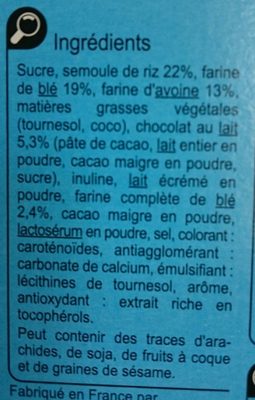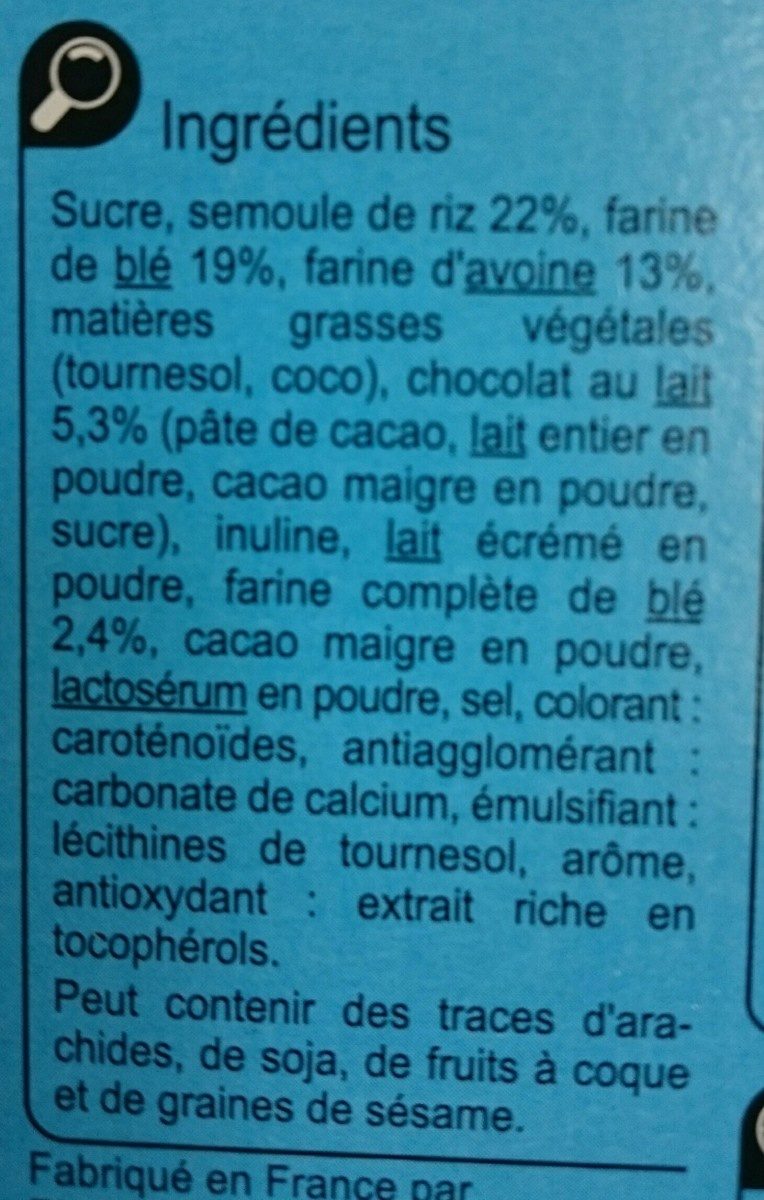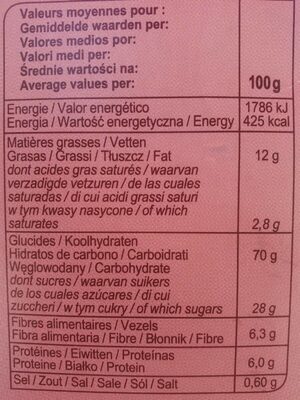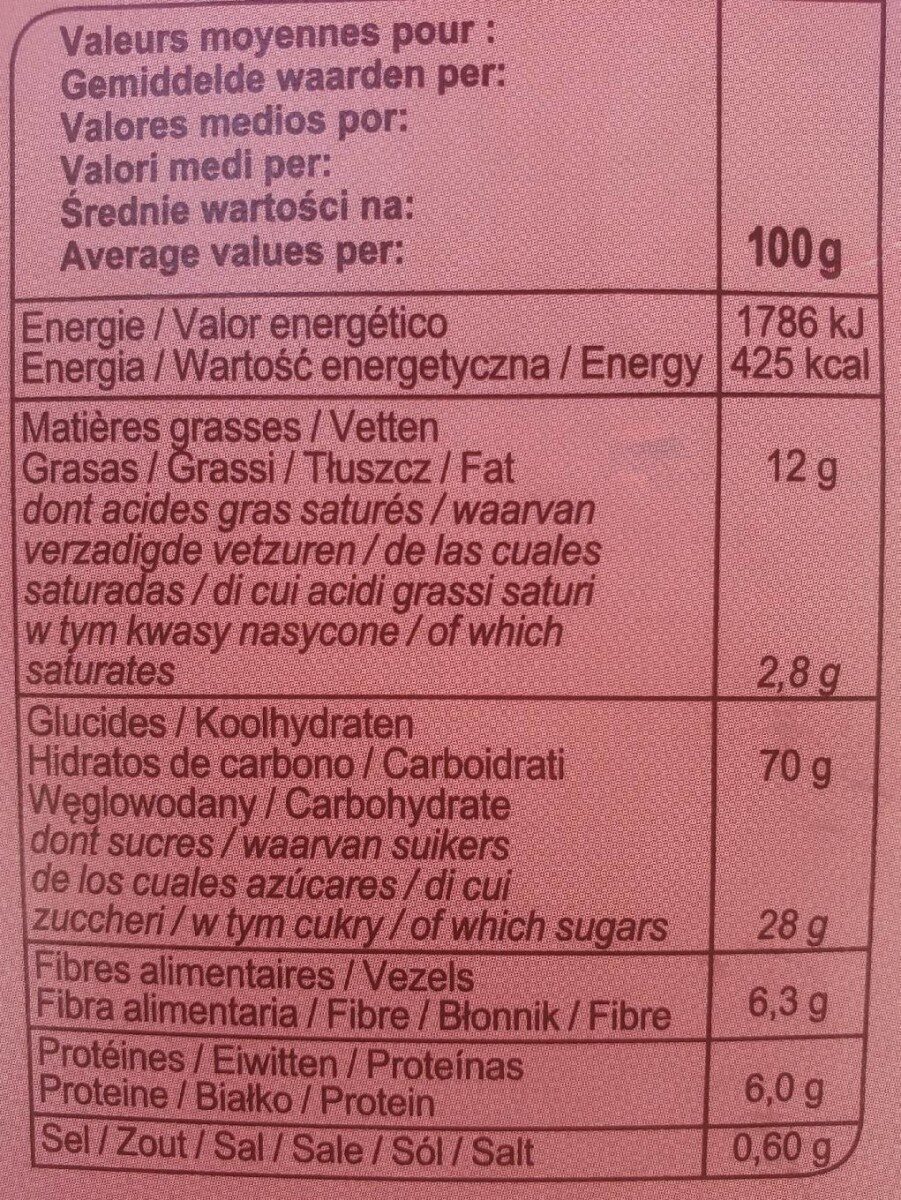CR'OCKS au chocolat au lait - Carrefour - 650 g
This product page is not complete. You can help to complete it by editing it and adding more data from the photos we have, or by taking more photos using the app for Android or iPhone/iPad. Thank you!
×
Some of the data for this product has been provided directly by the manufacturer Carrefour.
Barra-kodea: 3560070896745 (EAN / EAN-13)
Izen arrunta: Céréales pour petit déjeuner avec 35% de fourrage au chocolat au lait.
Kopurua: 650 g
Ontziratzea: en:Plastic, en:Bag, en:Cardboard
Kategoriak: en:Plant-based foods and beverages, en:Plant-based foods, en:Breakfasts, en:Cereals and potatoes, en:Cereals and their products, en:Breakfast cereals, en:Chocolate cereals, en:Extruded cereals, en:Filled cereals
Etiketak, ziurtagiriak, sariak: en:Made in France, Nutriscore, Nutriscore C
Manufacturing or processing places: France
Traceability code: EMB 80302A - Faverolles (Somme, France)
Dendak: Carrefour, carrefour.fr
Saltzen diren herrialdeak: Frantzia, Italia, Polonia, Espainia
Matching with your preferences
Ingurumena
Carbon footprint
Ontziratzea
Transportation
Other information
Preparation: Préparation : Versez vos céréales dans un bol. Pour conserver le croustillant de vos céréales, nous vous conseillons d'utiliser du lait froid.
Conservation conditions: Conservation : À conserver à l'abri de la chaleur et de l'humidité. Bien refermer le sachet intérieur après chaque utilisation. Pour une dégustation optimale, à consommer de préférence avant le / N° de lot: voir la date indiquée sur le dessus du paquet.
Customer service: Interdis - TSA 91431 - 91343 MASSY Cedex - France
Report a problem
Datuen iturria
Product added on by sebleouf
Last edit of product page on by thaialagata.
Produktuaren orria -gatik editatua date-limite-app, desan, driveoff, ecoscore-impact-estimator, fredmaison, kiliweb, nouky20, openfoodfacts-contributors, org-carrefour, packbot, quechoisir, roboto-app, segundo, yuka.H7xaDPnaANIRJ8r045MU9mKUCuvDB9FJBnMcog, yuka.RjZJdExMZzZsTjVSdk14bnBDNkwzWTUwbG9DMURYaU5DOXBCSVE9PQ, yuka.sY2b0xO6T85zoF3NwEKvlh1dTdfu-Rj0bAXnuBGq-fnRPrDPZNNP3I_wCqs, yuka.sY2b0xO6T85zoF3NwEKvlhQaDvj8_2mcEQ7lyGSWnIa3J6HPMclr-aH4NKs, yuka.sY2b0xO6T85zoF3NwEKvlk5qTeb_8gueNkflix2SyvW0FZ31X9973LPUHqs, yuka.sY2b0xO6T85zoF3NwEKvlmlNQf7ivSiVE0HShhetnfmgA7_NetQpzNSkP6s.










